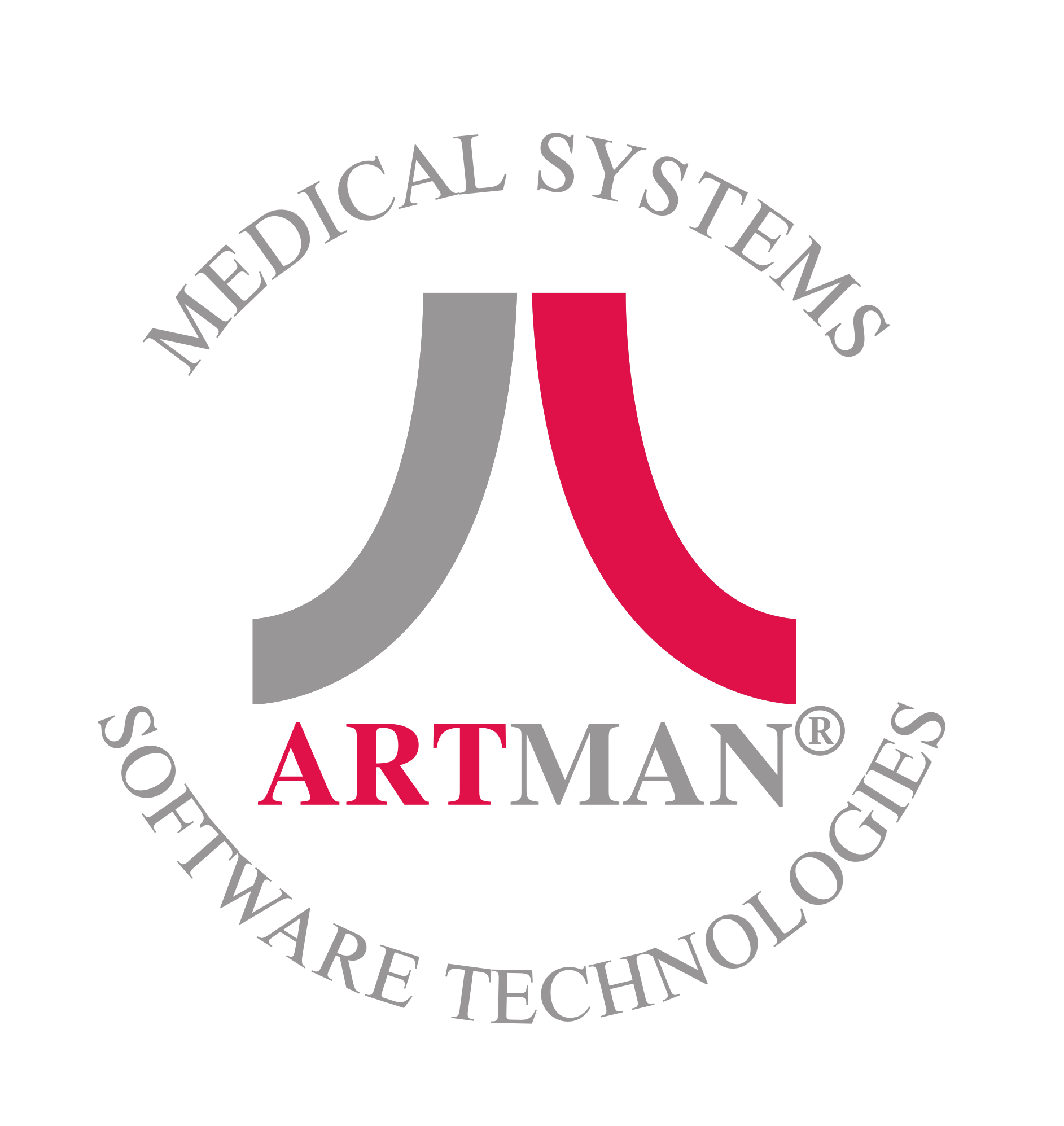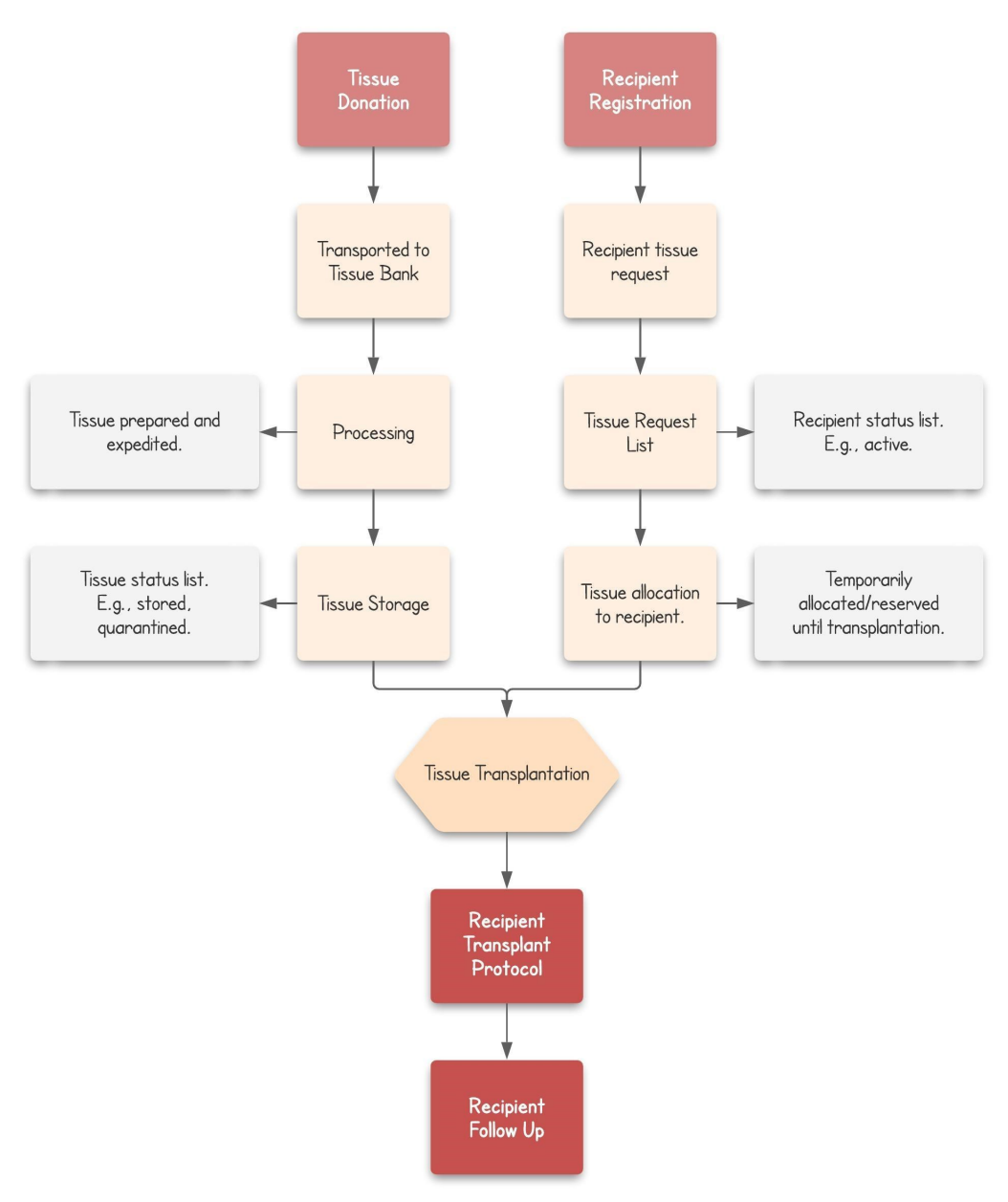Tissue Management
System
Tissue Management System
Alongside organs, the National Transplant System application includes tissue and cell donation and transplantation. The retrieval, processing and storage in Banks Labs is all logged into the database, where links to the recipient can be then found. The process of tissue transplantation requires close coordination among medical professionals, tissue banks, and transplant organizations to ensure that donated tissues are allocated to those in need in a timely and effective manner. The system also traces back in case of adverse reactions and events.
Tissues that can be transplanted, such as bone, skin, and heart valves, are typically recovered from deceased donors, processed and stored in tissue banks until they are needed for transplantation.
Meanwhile, the potential recipients who are waiting for a transplant request the tissue(s) and get placed onto the request list. The list is typically maintained by a national or regional organization responsible for tissue transplantation. The tissue is then selected from the storage bank database, based on factors such as blood type, tissue type, and size, and is temporarily allocated/reserved for the recipient.
After transplantation there is a follow up module, which generates auto notifications for recipients needing follow up, for example 3 months and 1 year after transplantation. The module allows for transfers to different Follow Up centers and re-registrations to Waiting List after rejection.
The following features are included in the Tissue Management System:
- Tissue donation and harvesting process (Procurement Donation)
- Tissue screening and processing (Testing, Processing)
- Tissue registering and quarantine (Preservation)
- National storage and procurement (Storage, Distribution)
- Importing, exporting and logistics (Import, Export)
- Single KSA coding system for tissues and cells for human applications compatible with EU coding system.
- Online tissue requests and recipient registration
- National allocation system of tissues and cells
- Transplantation
- Internal tissue establishment (TEs)/TEs forms processing
- Follow up forms processing
- Serious adverse reaction and events alert system (SARE)
- National statistics and reporting
- System auditing and administration
Extra features include:
- Foreign hospitals, transplant centers, research facilities and Tissue Banks are included.
- Tissues can be expedited into smaller tissue parts and each logged into the system separately. These can be
allocated to multiple recipients. - Information on different Tissue Retrieval teams (who, for example, perform enucleation on donor) are included for each Tissue Bank .
- Tissue processing forms are adapted to different tissue types and their specific requirements.
- Dashboard, forms and information can be customised and adjusted.
- Privileges and roles can be assigned to each user.
- An administration user can have access to all areas of the process.
Recipient Forms
Profile Form
The purpose of this form is to collect general profile information about the patient. Items include identification, contact details and patient demographics.
Recipient Registration Form
The purpose of this form is to collect recipient registration information. Items include registration, tissue requests, comorbidities, insurance and sponsor information.
Tissue Transplant Form
The purpose of this form is to collect transplant information immediately after transplantation occurs. Items include hospitalisation, disease and treatment.
Follow Up Form
The purpose of this form is to collect follow up information to monitor the recipient’s health in the months and years following the transplant. Items include transplant details, follow up data, acute rejection incident reporting, clinical status, post-transplant complications and tissue specific information.
Laboratory Forms
The purpose of these forms is to collect laboratory results information. Laboratory tests include for example Serology, Haematology, Biochemistry, Sensitisation, Kidney Function and Electrolytes.
HLA Form
The purpose of these forms is to collect HLA information. HLA molecules play a crucial role in organ transplantation, as they determine whether a transplanted organ is recognized as self or non-self by the recipient’s immune system. The HLA form is detailed, easy to use and includes dynamic validation.
Profile Form
The purpose of this form is to collect general profile information about the patient. Items include identification, contact details and patient demographics.
Recipient Registration Form
The purpose of this form is to collect recipient registration information. Items include registration, tissue requests, comorbidities, insurance and sponsor information.
Tissue Transplant Form
The purpose of this form is to collect transplant information immediately after transplantation occurs. Items include hospitalisation, disease and treatment.
Follow Up Form
The purpose of this form is to collect follow up information to monitor the recipient’s health in the months and years following the transplant. Items include transplant details, follow up data, acute rejection incident reporting, clinical status, post-transplant complications and tissue specific information.
Laboratory Forms
The purpose of these forms is to collect laboratory results information. Laboratory tests include for example Serology, Haematology, Biochemistry, Sensitisation, Kidney Function and Electrolytes.
HLA Form
The purpose of these forms is to collect HLA information. HLA molecules play a crucial role in organ transplantation, as they determine whether a transplanted organ is recognized as self or non-self by the recipient’s immune system. The HLA form is detailed, easy to use and includes dynamic validation.
Donation Forms
Profile Form
The purpose of this form is to collect general profile information about the patient. Items include identification, contact details and patient demographics.
Core Donor Data Form
The purpose of this form is to collect core donor information. Items include donor details, pooled information, donor condition, observations, past medical history and drugs.
Tissue Retrieval Form
The purpose of this form is to retrieve tissues and collect retrieval information. Items include tissue bank, date, encapsulation and serial number.
Tissue Processing & Segmentation Forms
The purpose of this form is to collect tissue processing and segmentation information. Items include tissue retrieval, tissue bank admission, tissue size, storage in quarantine, quality control, storage ready for expedition and tissue specific information.
Laboratory Forms
The purpose of these forms is to collect laboratory results information. Laboratory tests include for example Serology, Haematology, Biochemistry, Blood Gases, Monitoring, Urine Output, Hemodynamics, Echo Test, Kidney Function and Electrolytes.
HLA Form
The purpose of these forms is to collect HLA information. The HLA form is detailed, easy to use and includes dynamic validation.
Profile Form
The purpose of this form is to collect general profile information about the patient. Items include identification, contact details and patient demographics.
Core Donor Data Form
The purpose of this form is to collect core donor information. Items include donor details, pooled information, donor condition, observations, past medical history and drugs.
Tissue Retrieval Form
The purpose of this form is to retrieve tissues and collect retrieval information. Items include tissue bank, date, encapsulation and serial number.
Tissue Processing & Segmentation Forms
The purpose of this form is to collect tissue processing and segmentation information. Items include tissue retrieval, tissue bank admission, tissue size, storage in quarantine, quality control, storage ready for expedition and tissue specific information.
Laboratory Forms
The purpose of these forms is to collect laboratory results information. Laboratory tests include for example Serology, Haematology, Biochemistry, Blood Gases, Monitoring, Urine Output, Hemodynamics, Echo Test, Kidney Function and Electrolytes.
HLA Form
The purpose of these forms is to collect HLA information. The HLA form is detailed, easy to use and includes dynamic validation.

